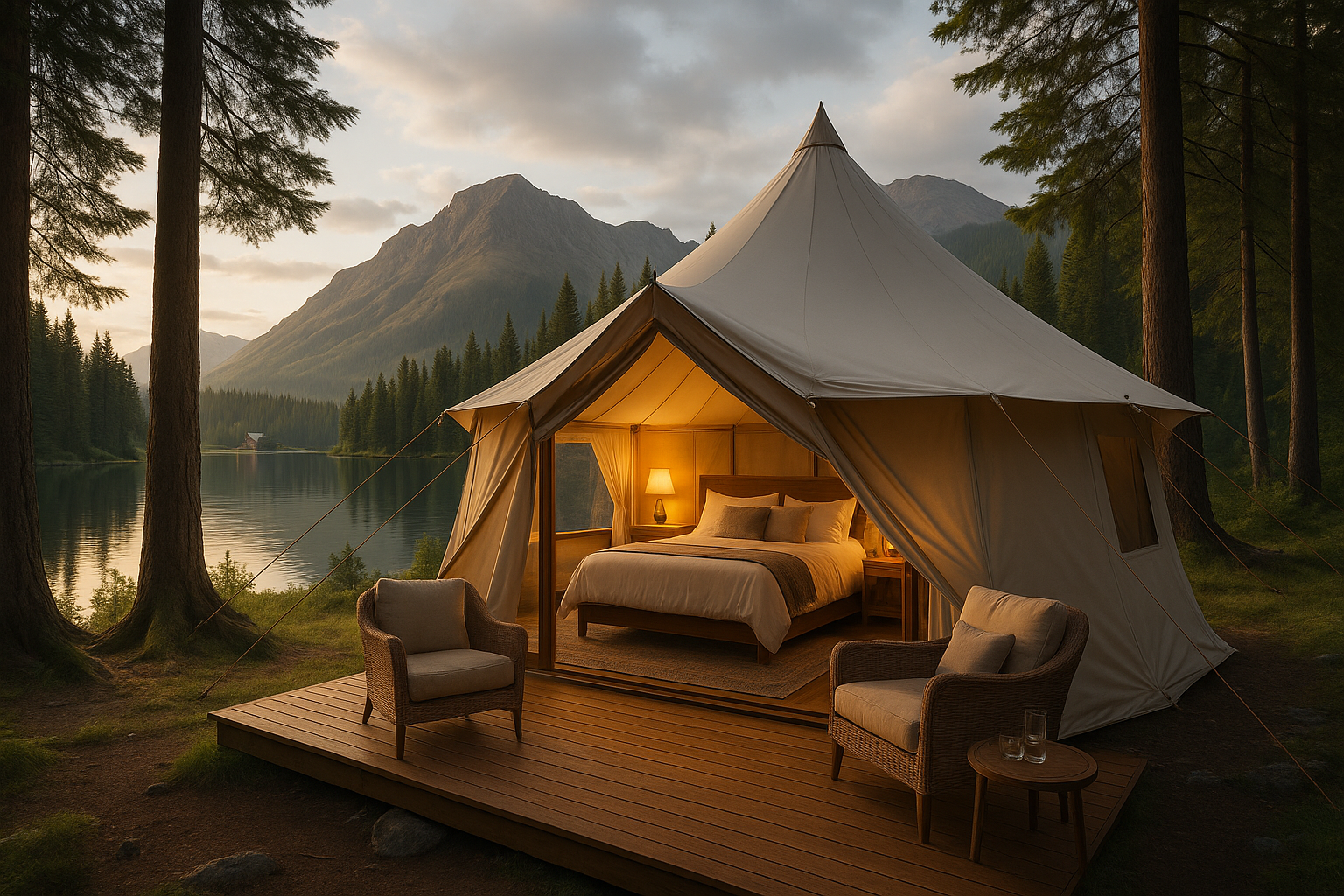A Deep Dive into Glamping: The Luxurious Side of Getting Back to Nature
Glamping, short for glamorous camping, is not your typical back-to-basics outdoor experience. It blends the thrill of camping with the luxury of a five-star hotel, allowing travelers to enjoy the best of both worlds. Whether nestled in a chic airstream, a furnished yurt, or a treehouse outfitted with all the amenities, glamping offers a unique and luxurious way to connect with nature.

Historical Context and Key Developments
Camping has been a popular pastime for centuries, but the concept of glamping is a relatively new phenomenon. The term first appeared in the UK in the early 2000s, but the idea of combining outdoor adventure with luxury and comfort is far from new. In the 16th century, the Scottish Earl of Atholl set up a lavish tented camp for a royal visit, complete with luxurious furnishings and full catering.
In the 1920s, wealthy American and British travelers going on African safaris didn’t want to sacrifice comfort, leading to luxurious tented camps in the wilderness, which many would argue was an early form of glamping. However, it was only in the 21st century that glamping gained momentum, evolving from a niche trend to a mainstream travel option.
Glamping in the Current Travel Landscape
In recent years, glamping has grown exponentially in popularity. It responds to the modern traveler’s desire for unique experiences and sustainable travel options. A 2019 report by Arizton Advisory and Intelligence predicted that the global glamping market would reach a staggering $1 billion by 2024.
Glamping sites have sprouted across the globe, from the forests of Canada to the Outback of Australia. It’s not just limited to the wilderness either; urban glamping experiences, such as rooftop camping in New York City, have also emerged.
The Advantages, Challenges, and Impact of Glamping
Glamping offers many benefits, including a deeper connection with nature, a unique experience, and, of course, comfort and luxury. For those who love the idea of camping but aren’t keen on roughing it, glamping is an ideal solution.
However, it’s not without challenges. Glamping can be costly, and finding availability can be tricky due to its growing popularity. Moreover, as the trend grows, maintaining a sustainable and eco-friendly approach becomes a challenge.
Despite these hurdles, glamping has had a significant impact on travel trends. It has democratized the outdoors, making it more accessible to those who may not be traditionally inclined towards camping. It’s redefining what it means to be adventurous, proving that you don’t have to sacrifice comfort to connect with nature.
Practical Insights and Fun Facts
-
Glamping can take many forms, including yurts, pods, treehouses, teepees, and even castles!
-
The world’s most luxurious glamping spot is likely Clayoquot Wilderness Resort in British Columbia, Canada, with rates starting at $3,500 per night.
-
Glamping isn’t just for summer. In colder climates, glamping can include warm, cozy cabins or even igloos.
A Final Thought
The rise of glamping showcases a shift in travel preferences towards unique, experiential, and immersive adventures. It evidences the desire to connect with the natural world without forgoing the comforts of modern life. As we continue to seek novel ways to explore and appreciate our world, it’s likely that glamping will continue to evolve and thrive. It’s a testament to the fact that in the realm of travel, there truly is something for everyone.




